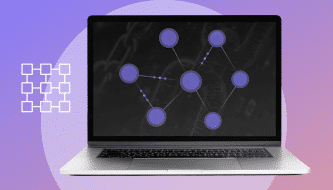
4 cyberthreats that endanger websites

Being targeted by a cyberattack today is not an "if" but rather a "when" hypothesis you should expect to face with certainty. Secure websites convey confidence, making your customers more likely to do business with you.
Published by

Simone Catania
Date
Cybercrime has increased dramatically, taking advantage of the widespread use of the internet and web-based digital services. In light of this scenario, the good news is that reducing the impact is actually possible. By 2024, organizations adopting a cybersecurity full-packet can decrease the financial implications caused by cyberthreats by 90%. Although the actual security policies, equipment and technology are essential, cybersecurity awareness in general must become standard for everyone. And this means every person within the organization must understand exactly what the threats are and how they work.
Here we will focus on website protection. But what does cybersecurity for a website mean? It consists of measures to guarantee the confidentiality of services and user authentication in the digital world. Internet users should be free to browse any page without fearing incidents. Unfortunately, as the website hosts a wide range of cyberthreats, this is not the case.
The security risk for websites
Cybersecurity measures devoted to protecting website integrity should not be underestimated. As websites are the primary entry door to the internet, they are central to many digital components.
Nowadays, a website is not only an HTML page with text to read plain information. It is a complex environment with several functions. These often create an enhanced digital experience or allow users, for example, to carry out a purchase, insert sensitive data for subscriptions or use a 24/7 service of a SaaS company. These actions require the help of other programs, but at the same time, they can make computers more vulnerable to cyberattacks. Therefore, the best approach is always to adopt the highest security level.
This is how websites can get compromised
Cybercrime can use web systems and services as a means to mislead victims. Malicious URLs or scripts to redirect users to malicious content fall under this category.
Nowadays, the attack surface is greater than ever before. As of December 2021, over 70 million live websites use content management systems (CMS) on the entire internet, so they have become an important vector of web-based attacks. Due to the large number of vulnerabilities connected to third-party plugins, which are often outdated, they open up a wide range of possibilities for hackers.
Website attacks can also target its availability, applications and APIs or cause brute-force attacks, which perform repeated login attempts to try to overwhelm and gain access to the website.
4 most common cyberattacks against websites
You can’t protect yourself against cyberthreats if you don’t know them. Although terms like malware or spam sound quite familiar, the mechanics behind these is usually unknown to most people. Keep reading to learn more about the five most common types of cyberattacks against websites and how to protect yourself and your organization.
1. Malware
Malware combines the words malicious and software. In general, we use malware to name any intrusive software developed by hackers. Common examples include viruses, worms, trojans, spyware, adware and ransomware. These malicious programs are specifically designed to get downloaded and installed on the computer without the user knowing or even realizing it. When the installation is complete, the software can cause severe damage, e.g. data breaches.
In 2018, 1 in 13 web requests led to malware. In June 2021, the most common malware families detected were Trickbot (botnet and banking), XMRig (cryptominer), Formbook (infostealer), Glupteba (botnet), and Agent Tesla (infostealer). These days, malware is targeting container environments as this technology allows quick scaling.
Security tip #1: How to protect yourself against malware
First and foremost, remember to always keep your computer and devices up-to-date. A good active antivirus should potentially cover your systems and networks. Be very careful before clicking on links or downloading anything from the web. Allow your firewall to decrypt the SSL/TLS traffic, emails and mobile applications. With the DigiCert Smart Seal, you can show your website visitors the status of the malware scan.
Recommendation: Select the appropriate TLS/SSL certificate for your projects. InterNetX offers all necessary variants from the leading providers.
2. Web application attacks
The internet has become a highly programmable environment. In recent years, the web has seen an increasing number of applications, software run on web servers rather than locally on the device’s operating system. This is why the security of web applications has become one of the most important topics in the digital environment.
In 2019, a 52% increase of this threat year-over-year was registered. This is mainly due to the complexity of the source code, which dramatically increases the likelihood of unforeseen vulnerabilities and malicious code manipulation. Furthermore, web apps often contain very sensitive data, which can be quite lucrative and the attacks can be executed easily and launched automatically against thousands of targets at a time.
The targets of such cyberattacks are often the databases and the web applications used to store or deliver information, such as in the case of a SQL injection attack, probably the most common and dangerous vulnerability to manipulate a backend database.
Security tip #2: How to protect yourself against web application attacks
Although, as an end-user, you cannot do much to protect yourself against a compromised web application, you should always use an encrypted connection and an updated browser. It is the provider’s responsibility to detect any possible vulnerabilities and deliver a bug-free web app. This can also be done using a professional software scanner.
Web app firewalls can work to a certain extent. They might point out the vulnerability but cannot eliminate the problem. Unfortunately, they can also be bypassed by cybercriminals. Using a solid input and injection validation procedure will only help properly-formed data pass.
Implement an encrypted connection and, last but not least, rely on a professional service provider that can host your web application with maximum security, availability and performance.
Recommendation: DDoS mitigation, encryption and DNSSEC protection. These are just a few of the reasons why you can rely on InterNetX hosting solutions.
3. Distributed Denial of Service (DDoS)
Hackers are able to exhaust the service or overload one or more elements of the network infrastructure systems. The impact ranges from unavailable services to entire websites, applications or businesses being taken offline. In such cases, we refer to a Distributed Denial of Service (DDoS) attack, the aim of which is to saturate the resources to block network communication.
This is the reason why servers and data centers are their favorite targets. By 2023, experts foresee 15.4 million DDoS attacks annually.
Find perfect domains
Compared to DOS (Denial of Service), DDoS attacks are much more dangerous as they use botnets, thereby reaching a greater range. 52% of all attacks lasted less than 15 minutes, while 21% achieved one hour. More prolonged DDoS attacks aim to cause permanent damage to the attacked infrastructures.
An even gloomier scenario awaits us with regard to this cyberthreat in the future. IoT devices and the 5G will increase the number of devices connected to the internet and the sophistication of DDoS attacks.
Security tip #3: How to protect yourself against DDoS
Protecting yourself against DDoS mainly means being prepared to withstand this kind of attack at any time. To do so, you will need a scalable infrastructure and organize a response plan in case of attack.
Do you have a plan for disaster recovery, including a DDoS attack scenario? If you run a critical service that needs to be online 24/7, invest in DDoS protection service. Ask your ISP how they respond to this cyberthreat and what protection level they offer. Test your defense and adjust it if necessary.
Recommendation: The InterNetX DDoS Mitigation Service helps diffuse these attacks, ensuring the continued operation of affected websites while reducing disruptions to a minimum.
4. Data breach
Today companies store a large amount of data, a mix of personal and sensitive information that needs to be protected appropriately. This is easier said than done. Even a single “small” misconfiguration in the website can expose the whole database. By 2024, business losses due to cybercrime data breaches will exceed $5 trillion. The most exposed data types are emails (70%) and passwords (64%).
A data breach occurs when information is accessed without the necessary authorization of the owner for unauthorized copy, disclosure, modification, loss of access or deletion. These actions can be accidental, but they can be classified as espionage, theft, dissemination, compromise, voluntary encryption or destruction when carried out intentionally. Usually, this data is then used for malicious actions.
71% of data breaches have financial goals. The most critical part is that companies and organizations are often not aware of data leakage and information can be exposed to hackers for a long time. In 2020, on average, organizations identified the data breach after 228 days and they required 80 days to contain it.
Security tip #4: How you can protect yourself against a data breach
Since data breach is the outcome of other cyberthreats, you should implement a general cybersecurity shield. From end-users to IT staff, train everyone involved and use strong passwords and safe password management practices. Encrypt all communications and pay attention to sensitive and personal data security. Investing in detection and alerting tools will help to prevent data breaches.
Recommendation: InterNetX offers a wide range of TLS/SSL certificates from leading encryption providers like DigiCert. You can manage your certificates conveniently via a professional TLS/SSL management tool like AutoDNS. Furthermore, you get a free DV certificate to verify the domain ownership with every domain registration, thereby reducing risk and actively responding to cyberthreats while managing your digital assets effectively.
How to protect yourself and your website
Always be careful to use the most updated browser version and related plugins. They could detect potential vulnerabilities or threats in the web pages. If you have any doubts, you could isolate the applications and create a sandbox in your browser. Tools such as adblockers or JavaScript blockers can hinder the execution of malicious codes in compromised websites.
If you run your website in a CMS, keep the source code up-to-date. Newly released updates often include security patches. Furthermore, use a TLS/SSL certificate to encrypt communications and prevent data theft.
Not sure which SSL certificate you should choose for your website? We have the right certificate for each and every purpose.
Knowledge is the most successful weapon against cyberthreats
In 2021, cyberattacks are expected to cause damage amounting to a total of $6 trillion. If we think of this number as a country, it would be the world’s third-largest economy after the United States and China. Most people tend to think that cyberattacks only come through sophisticated network hacking. This assumption can result in a great deal of damage as you might lower your defense in the daily tasks you perform on the internet. Raise your awareness, raise your defense!
Recommendation: Download our ebook:
The 15 most common cyberthreats and how to protect yourself.






